Please
Note: Firefox and some other
search engines are not suitable – Use “Internet
Explorer” for this page to load perfectly!
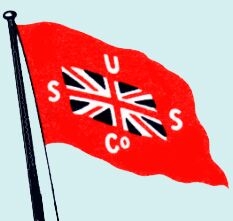
Union
Steamship Company of
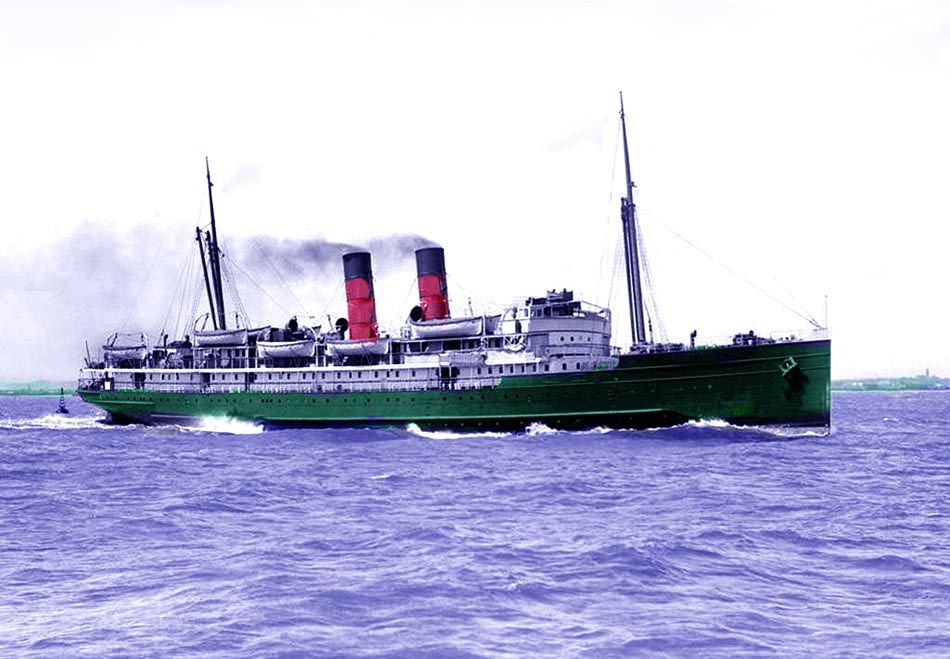
The
delightful TS Loongana is seen in
ready
to cross Bass Strait bound for the
Author’s
private maritime collection originally obtained in Wellington New
This is the story of a fine New
Design & Construction:
The TS Loongana was designed to be a well
designed and a fast “Union Steamship Company” (USSCo) turbine
steamer to operate passenger and cargo services between
This delightful looking passenger ship was
built by the well-known Scottish ship builder,
Some of the information I managed to source
out about this fine 2,448 GRT (Gross Registered Ton) ship was as follows and I
trust that you will find it as interesting as it was, when it was written back
in 1904 for the “New Zealand Times,”
“The Union
Steamship Company’s turbine steamer … turbine machinery, although
it occupies the same floor space, it will not require half the same height in
the engine room as ordinary engines in common use at present. There will be 18
furnaces altogether, two double-ended and two single-ended boilers. There will
be three propellers, similar in design to the everyday pattern, although
considerably smaller owing to the greater revolutions to the minute than the
common type. The vessel’s propellers will measure four feet (1.4m) in
diameter, and will run at a velocity of 450 revolutions a minute. The three
propellers will be placed in a position similar to that of the ordinary twin
screws, one on each side close to the rudder and the third propeller between
the other two. The absence of vibration is not the least striking feature of
the turbine. There will be three turbines, one fitted to each tail shaft and of
course, working entirely independent of each other. The turbine as an engineering
contrivance is by no means a latter day invention, but only of recent years has
the attention of experts been turned towards applying to the device to marine
engines. The turbines cannot reverse. Therefore other turbines are fitted,
which are idle until the vessel is required to go astern.”
I found this a most interesting and a revealing insight of the ship from days long gone, and it displays their thoughts on turbine steam ships and the details that were given, and it was obviously prior to her being even being launched!
The
Loongana was finally launched on June, 2 1904 and she was taken to her fit-out
berth in the River Clyde for completion. She then undertook her sea trails
where she achieved her amazing maximum speed of 22.8 knots and she passed with
flying colours!
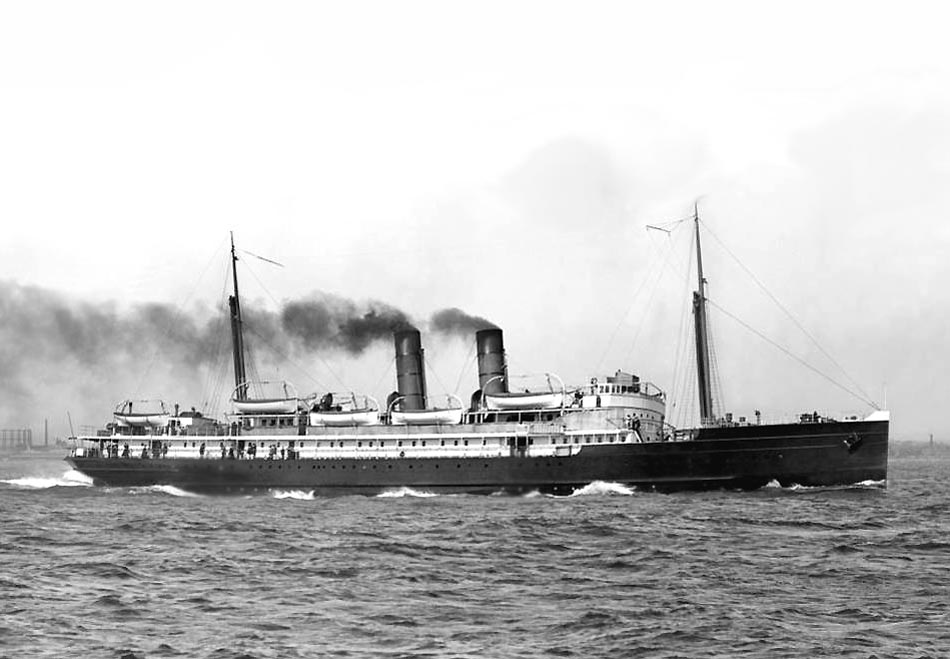
The
Sourced from the State Library of
Maiden Voyage to Melbourne
The TS Loongana was
handed over to the Union Steamship Company on August 25, 1904 and Captain
Livingstone took command of the ship and he ensured that she was fully manned
and stocked with everything in perfect order for her maiden voyage to
She departed Greenock, Scotland on August 31,
1904 and according to Captain Livingstone as well as from other official
sources, her maiden voyage to Australia went amazingly smoothly, and below are
just some of the details of her voyage;
The voyage was
certainly very successful, for there was not the slightest hitch working the
engines throughout the voyage. There were some heavy periods of very heavy
weather, which likewise enabled the ship to prove her fine seafaring qualities.
Her steadfastness was remarkable, and in the region of the southeast trades
where the winds and seas were exceptionally severe, the vessel did not ship a
single drop of water!
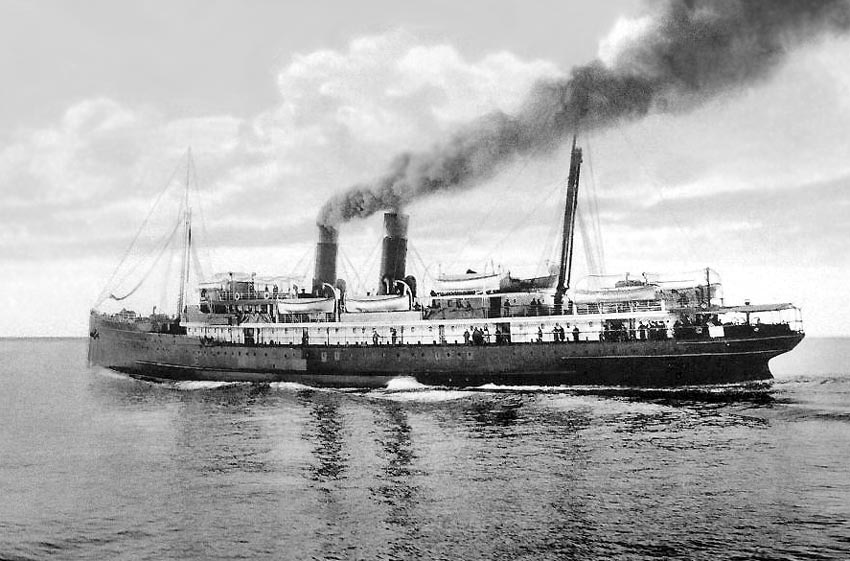
The
TS Loongana is seen at sea with passengers out on deck
From the
Author’s private maritime collection
The voyage from
Greenock, including stops at
There was no doubt that this fine vessel had
already proved that she was a worthy ship for she would have to sail Bass Strait
and it is well known that it can at times be quite rough! And during her voyage
to
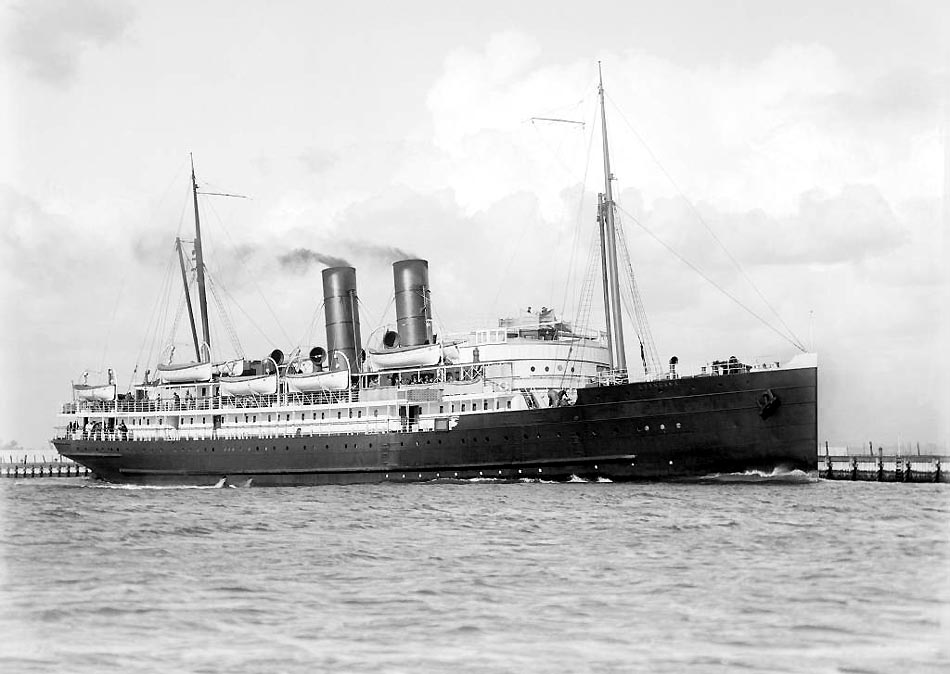
Here
we see the TS Loongana arrive at
Sourced from the
State Library of
Preparation for Service:
Having arrived in
Bass
Strait
With the TS Loongana made ready to operate her “Express Passenger Service” she commenced duties in October 1904, and she rapidly became very popular because of her on board comforts and being the first steam turbine merchant ship ever in the southern hemisphere. Although she would sail mostly between 18 and 20 knots, yet during her sea trials she was able of reaching an excellent speed of 22.8 knots, which was remarkable for that time as she was one of the fastest ships around!
Two
wonderful old postcards from my personal collection
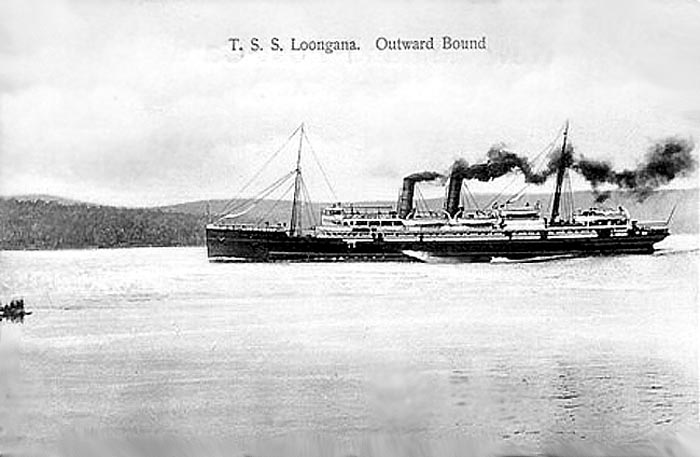
Her
we see the Loongana depart

And
this is her slowly sailing on the wonderful
Please Note: All postcards
on this page are from the Author’s private maritime collection
TS Loongana became a very popular ship, for she offered far more comforts than any ship on the Bass Straits had ever seen before, for she had excellent and beautifully designed appointments. Both First and Second class had a beautiful Music Room as well as a Grand Saloon with the Bar (Main Lounge). The Dining Saloons were considered as being grandiose, and the public venues on the Loongana were considered suitable for a grand Ocean Liner! Of course First Class public venues were located forward and Second Class aft!
In addition, cabins on board were as being the best ever to be found on a ship especially designed for a nightly overnight crossing of Bass Strait for previously they had been more frugal. But now, each room was well appointed with First Class obviously being superior, but both classes featured the best innerspring mattress available at that time as well as cosy eider down quilts. The TS Loongana also became famed for being a ship that was offered a comfortable voyage, for she was ship without vibration as even more importantly she was a stable ship, for she somehow glided through the water being so perfectly designed, even in bad weather she was a well-balanced ship!
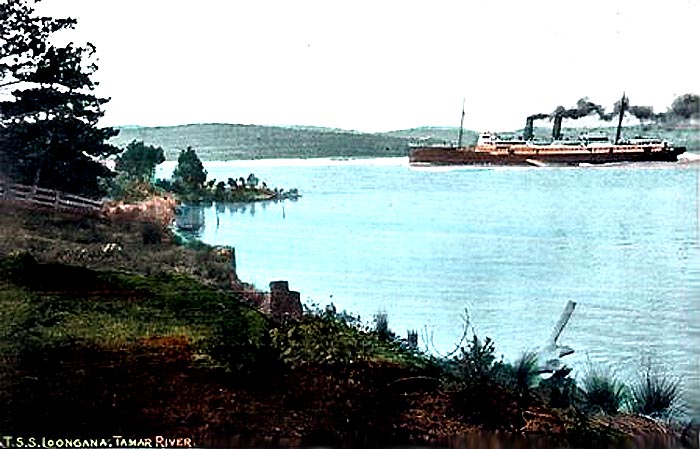
Above
& below: two more Postcards of the Loongana seen on
the beautiful

When required in 1912 the Loongana was quite
capable to maintain an average speed of 22 knots as she raced across Bass
Strait with
In December 1921, Union Steamship Company of New Zealand together with the well know Australian Shipping Company Huddart Parker, formed a new company named the “Tasmanian Steamers Proprietary Limited,” and it would operate a joint service between Melbourne and Tasmanian ports. The ships used were the TS Loongana and the smaller SS Oonah was provided by the Union Company and the new SS Nairana by Huddart Parker to join this new fleet.
Incidents:
During her 32 years in service she only had
two events, one that can be called a mishap and the other a brave event for the
ship. In 1917 she had one of her propellers damaged, meaning she could not
continue hr sailing, but this was soon repaired. Then in 1928, with industrial
disputes going on in
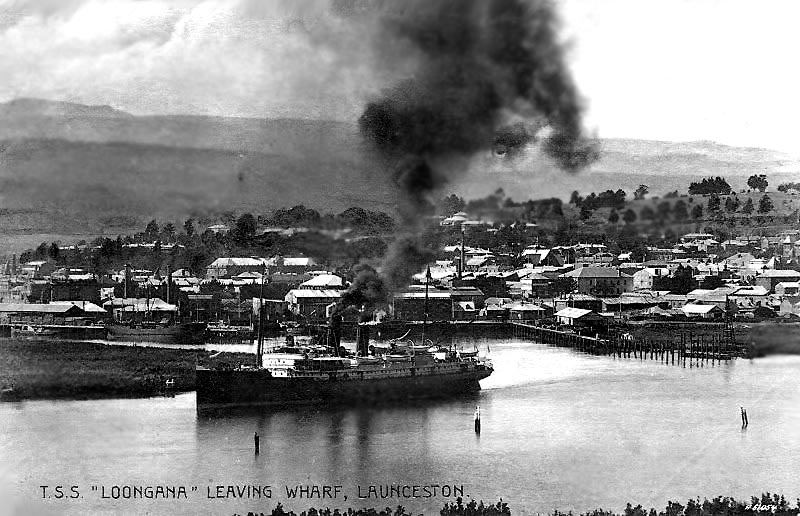
I
had to do some work on this badly damaged postcard of this
lovely
ship seen of one of her final departures from Launceston
Her Final Days:
But by late in 1935 it became obvious that the
time would soon come that the wonderful Loongana was aging and that she would
be replaced by the new and a larger ship that was being built by Alexander
Stephen & Sons,
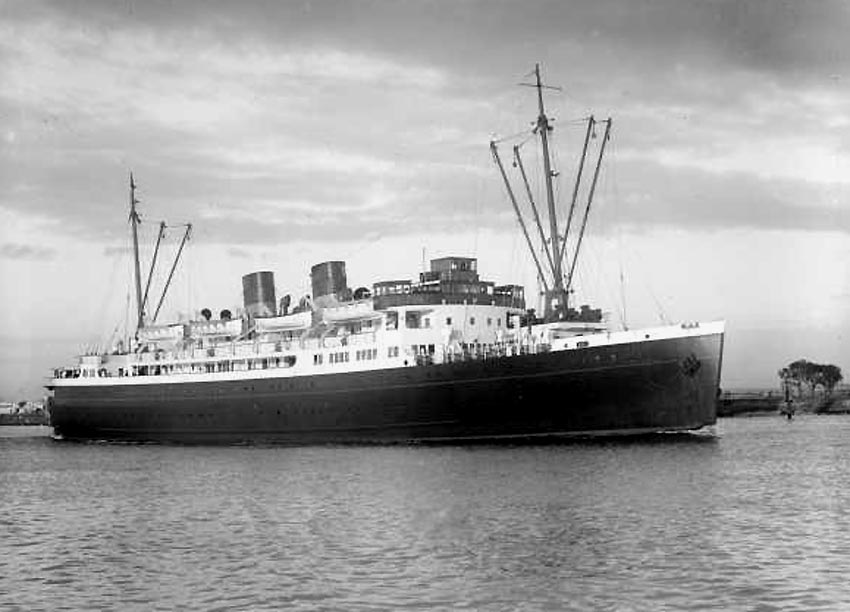
A
more modern looking 4,325-ton SS Taroona
From the
Author’s private maritime Collection
Finally the time came that the TS Loongana was
laid up in
The beautiful TS Loongana was once called
“A beautiful Yacht” and she departed
TS Loongana Specifications:
Owner: Union
Steamship Company of
Builder: William Denny
and Brothers,
Yard
No: 728.
Launched: June 2, 1904.
Registered:
Length: 91.5m –
300.2ft.
Width: 13.1m –
42.11ft.
Draught: 4.11m - 13.6ft.
Speed: 20 knots 22.8
knots maximum.
Passengers: 240 First Class,
Second Class numbers unknown
Ownership: 1 - USSCo –
1904 to 1922.
. 2
- Tasmanian Steamers Pty Ltd -1922 to 1936.
Disposal
Data: Broken up in
Because
she was a True AUSTRALIAN!
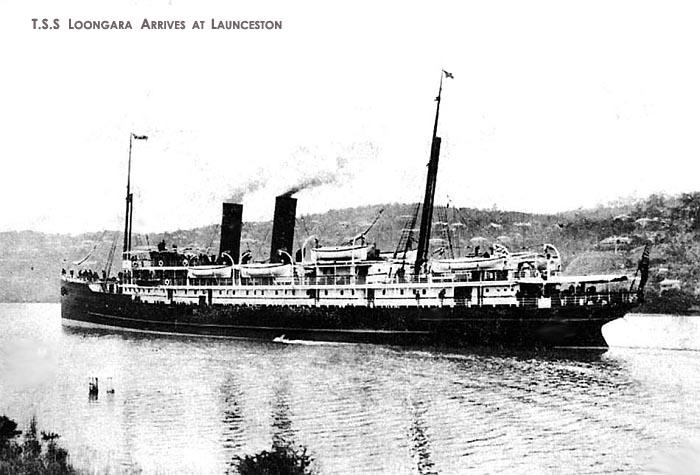
TS
Loongana is seen arriving at Launceston
Also view
the other USSCo Passenger Ships online
SS Waitaki
TSS Monowai /
****************************************
